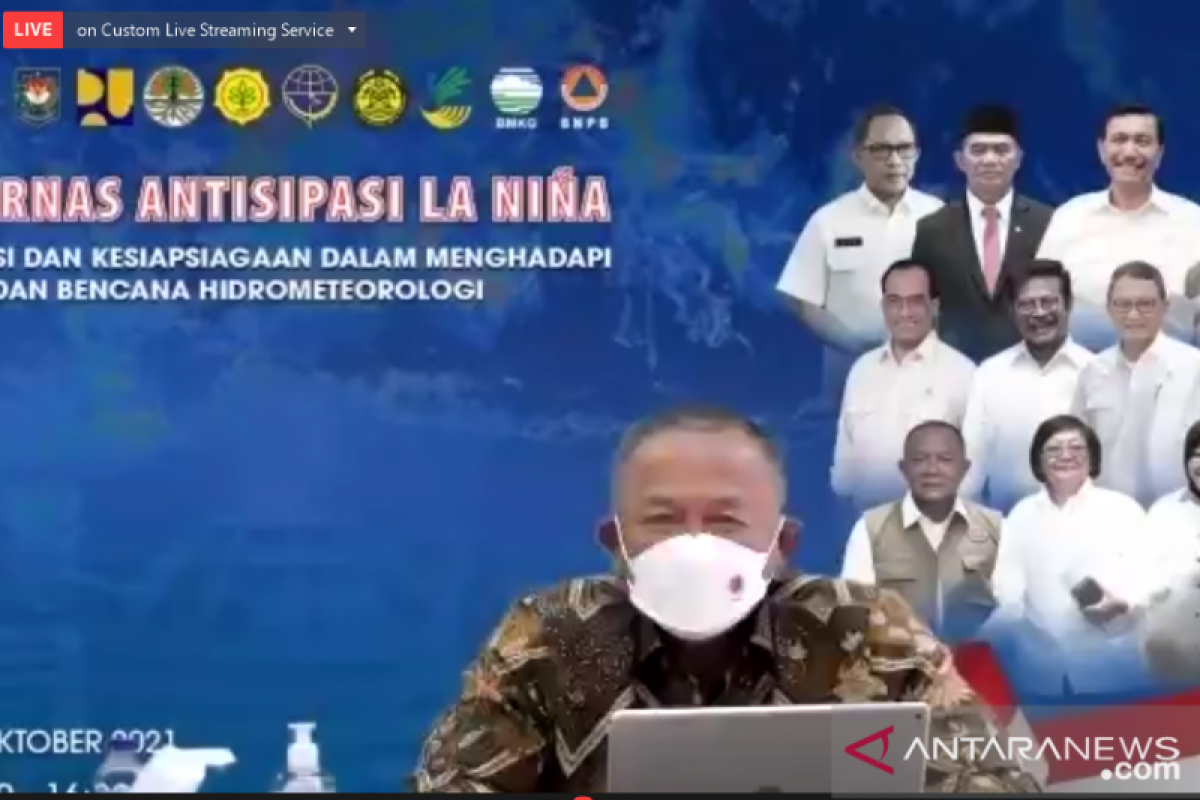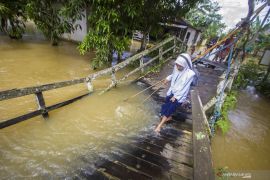The latest La Nina is forecast to last until early next year, he said.
“At the lower level or district/city level, efforts to keep watch for and mitigate the impact of La Nina are a must,” he said during a coordination meeting at the Meteorology, Climatology and Geophysical Agency (BMKG) in Jakarta on Friday.
The meeting was held as part of precautionary measures against the La Nina weather phenomenon, which usually triggers torrential downpours and widespread flooding across the country.
Warsito said several provinces including Central Java, West Java, East Java, and South Sulawesi recorded the highest number of wet hydro-meteorological disasters, such as floods and landslides, between 2016 and 2020.
Natural disasters mostly affect the districts of Bogor, Sukabumi, and Bandung in West Java, and the districts of Cilacap and Banyumas and Semarang city in Central Java, he noted.
“Short-term mitigation efforts to face the threat of wet hydro-meteorological disasters can be made through five steps, including roll calls,” he said.
Roll calls are aimed at checking the preparedness of personnel, equipment, and other supporting facilities, he said.
Related news: BMKG warns of potential hydrometeorological disasters
The next step is conceiving a contingency plan to mitigate the impact of La Nina-induced hydro-meteorological disasters, he said.
Another step is making preparations for a state of emergency at provincial, district, and municipal levels, he informed.
The mitigation efforts include planting trees, cleaning waterworks, repairing dikes, and optimizing the use of drainage systems, he said.
BMKG head Dwikorita Karnawati had earlier cautioned that as La Nina is developing over Indonesia, high precipitation that could trigger hydro-meteorological disasters.
A weak La Nina has been developing in October 2021 and is expected to strengthen in November and December and become a moderate La Nina by the end of 2021 to February 2022, Karnawati noted in a press release.
The La Nina phenomenon could cause an increase in rainfall that could trigger a hydro-meteorological disaster in Indonesia, she said.
"This can certainly increase the potential for hydro-meteorological disasters, such as strong winds, floods, flash floods, and landslides," she added.
Related news: Regions should be prepared against hydrometeorological disasters: BNPB
Translator: Prisca Triferna Vi, Suharto
Editor: Rahmad Nasution
Copyright © ANTARA 2021










